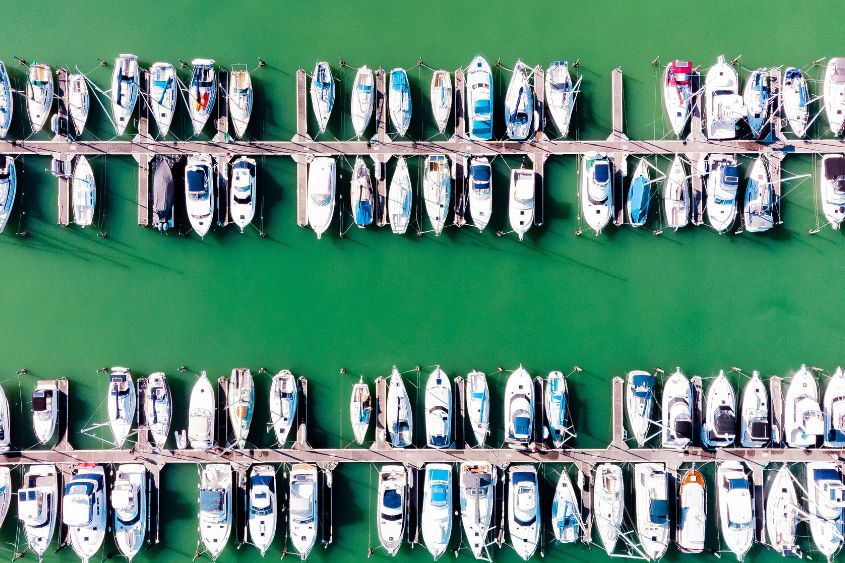Summer is coming and many sailors decide to revise or change their sailing ropes. But how can you choose to either change them or not?
Firstly, ropes do not have a long-lasting life due to the drastic loss of load and elongation resistance during the time. For this reason, halyards, sheets, and, more generally, all the sailing ropes, are as much important as the main and the sailing equipment. Moreover, each sailing rope material is different: for example, it can be resistant to sun, loads or it has a little stretch, etc. Apart from the material, it is also important how the ropes are spliced and woven together because each one of them has a precise role.
The variables
The most important variables of a sailing rope are its elasticity together with its elongation under loading. Equally important is to identify the resistance under the stress of a rope, and therefore the breaking load. The question you need to ask yourself is what tension can that rope withstand before breaking? Nautical ropes have extremely high load resistances, which make it practically impossible for them to break during normal use. However, these ropes can be damaged by incorrect positioning, or by risky knots.
The materials
As said before, the material is crucial when choosing a sailing rope and it can also be misleading sometimes. It happens quite often that the purchase is made with a clear budget in mind without considering that, maybe, considering the use of the rope, there would be needed one of another price and material. In fact, the basic and therefore very inexpensive nautical ropes are those made of polypropylene, which has a medium breaking load and good resistance to ultraviolet rays, together with a not inconsiderable elongation. The most common polyester ropes do better, with a high breaking load and average elongation. Aramidic, Dyneema, Spectra, Vectran and Zyoln fiber ropes offer extremely positive results in terms of load resistance, with minimal elongation. Especially in the case of Dyneema, we are talking about ropes that until some time ago were used only during regattas, and that today are also used on normal sailing boats. In all these cases, however, the price is higher than that of normal polyester ropes.
Choosing the sheets
Let us think about the purchase of the main sheet, the nautical rope which has the task of maneuvering the sail hoisted on the main mast (in some cases the only one) of the boat. We are therefore talking about a cable which, to be effective, must boast a minimum elongation, as well as a high resistance to loads, having to do with a rather important tension. This line, touching at various points along its course, must also offer high resistance to abrasion and offer itself in an ergonomic way to the boaters, who require a thickness suitable for their hands and a certain softness. On a racing boat or a cruising sailboat, one will opt for a quality sheet, starting with the material chosen (such as Dyneema, for example). Also, for other boats, however, you should beware of the race towards excessive savings, orienting yourself towards cables made of polyester, but produced by recognized companies in the sector.
The same characteristics are required, for example, for a genoa sheet, to which, in addition to high resistance to loads and an almost non-existent elongation, a particular resistance to wear is required, given the particular action of the drapery.
Choosing the halyards
Apart from the type of halyard, which should be evaluated according to its use and cost, when purchasing this maneuver, it is first necessary to calculate the quantity, length, and working load to which it is subjected. For the length, if you do not have previous indications (the old halyard) you can refer to those mounted on a similar boat or consult one of the calculation tables available on the websites of the various manufacturers of cables or deck accessories. Otherwise, you can refer to a practical rule of thumb which consists of transforming the length of the boat expressed in feet into meters: for a 40 feet boat then you will have to buy halyards 40 meters long.
Regarding the specifics of a rope, it should be kept in mind that the main halyard must be long enough to be fixed on deck and have the other end continuing at least a couple of meters beyond the stopper or the sheet choke. The halyard of the jib must instead have a tacking such as to allow easy maneuvers on the bow, even with the spinnaker cocked. Finally, the spinnaker halyard must measure at least three times the height of the mast to be able to spin the sail when lowering, holding it behind the mainsail and keeping the halyard under control with the winch.
We hope that this article has been helpful to clear your mind about the purchase of ropes. Find out the Sail Service halyards and sheets on our online shop: they are available in many materials, diameters and either spliced or not!











Leave A Comment